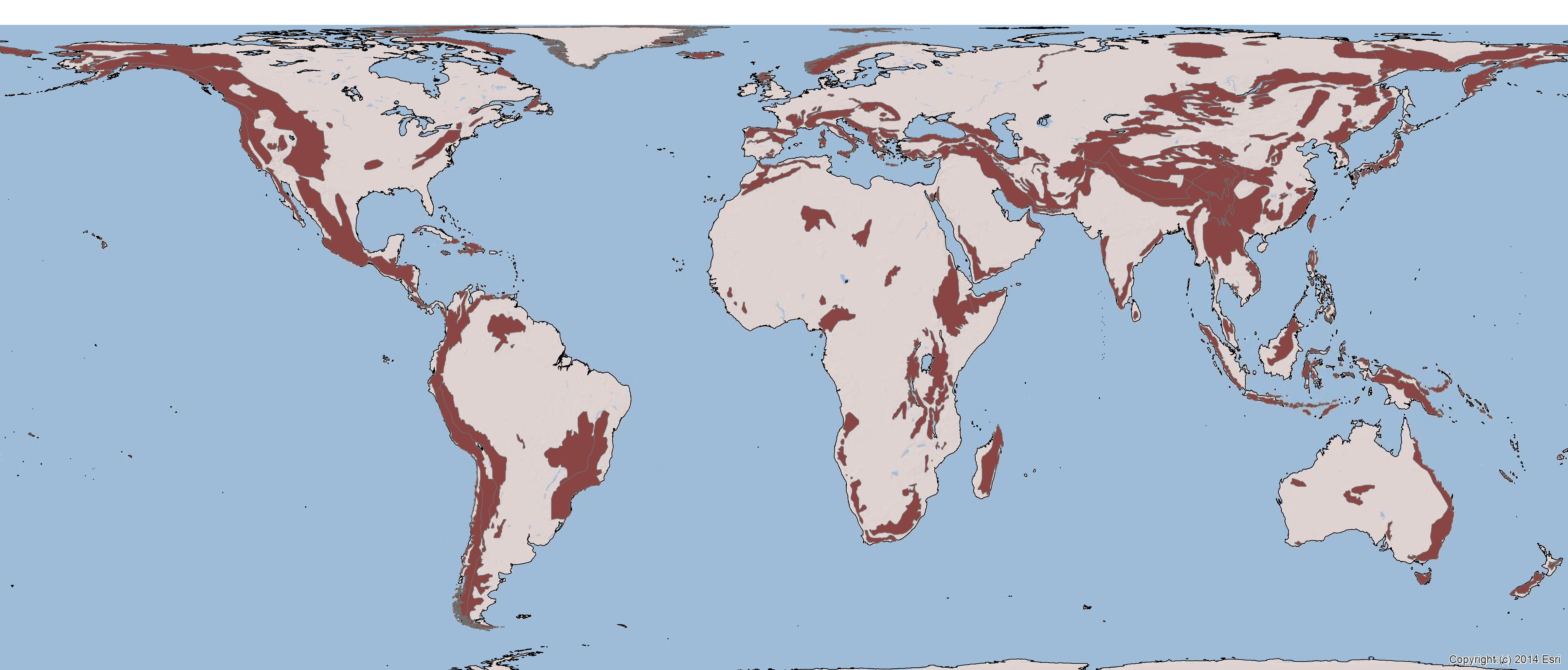Mountain Regions of the World
**Unpublished and confidential, for peer review only ** This page will be made publicly accessible upon publication of the papers **
The process of generating the biogeographical mountain regions
The process of generating the biogeographic regionalization, along with relevant references, is described here:
Analyses and statistical results
In Rahbek, Borregaard et al. (2019a) we presented trendlines and synthesized statistical relationships among Mountain Region diversity and area, net primary productivity, topographic complexity and climatological region. Full results and description of these analyses and statistical results are found here
In these two review papers for Science, printed in a thematic issue focusing on Alexander von Humboldt's contribution to science, we describe the climatic and geological impacts on ecological and evolutionary processes in mountains.
Rahbek, C.*, Borregaard, M.K.*, Colwell, R.K., Dalsgaard, B., Holt, B., Morueta-Holme, N., Nogués-Bravo, D., Whittaker, R.J. and Fjeldså, J. (2019a) Humboldt’s enigma: what causes global patterns of mountain biodiversity? Submitted to Science.
* these authors contributed equally. Correspondence to crahbek@snm.ku.dk
Rahbek, C.*, Borregaard, M.K.*, Antonelli, A., Colwell, R.K., Holt, B., Nogués-Bravo, D., Rasmussen, C.M.Ø., Richardson, K., Whittaker, R.J. and Fjeldså, J. (2019b) Building mountain diversity: evolutionary and geological processes. Submitted to Science.
* these authors contributed equally. Correspondence to crahbek@snm.ku.dk
Both papers used a classification scheme with a biogeographic regionalization of all Mountain Regions of Earth. This classification scheme is available in zipped ESRI ArcGIS shapefile format from this link.

